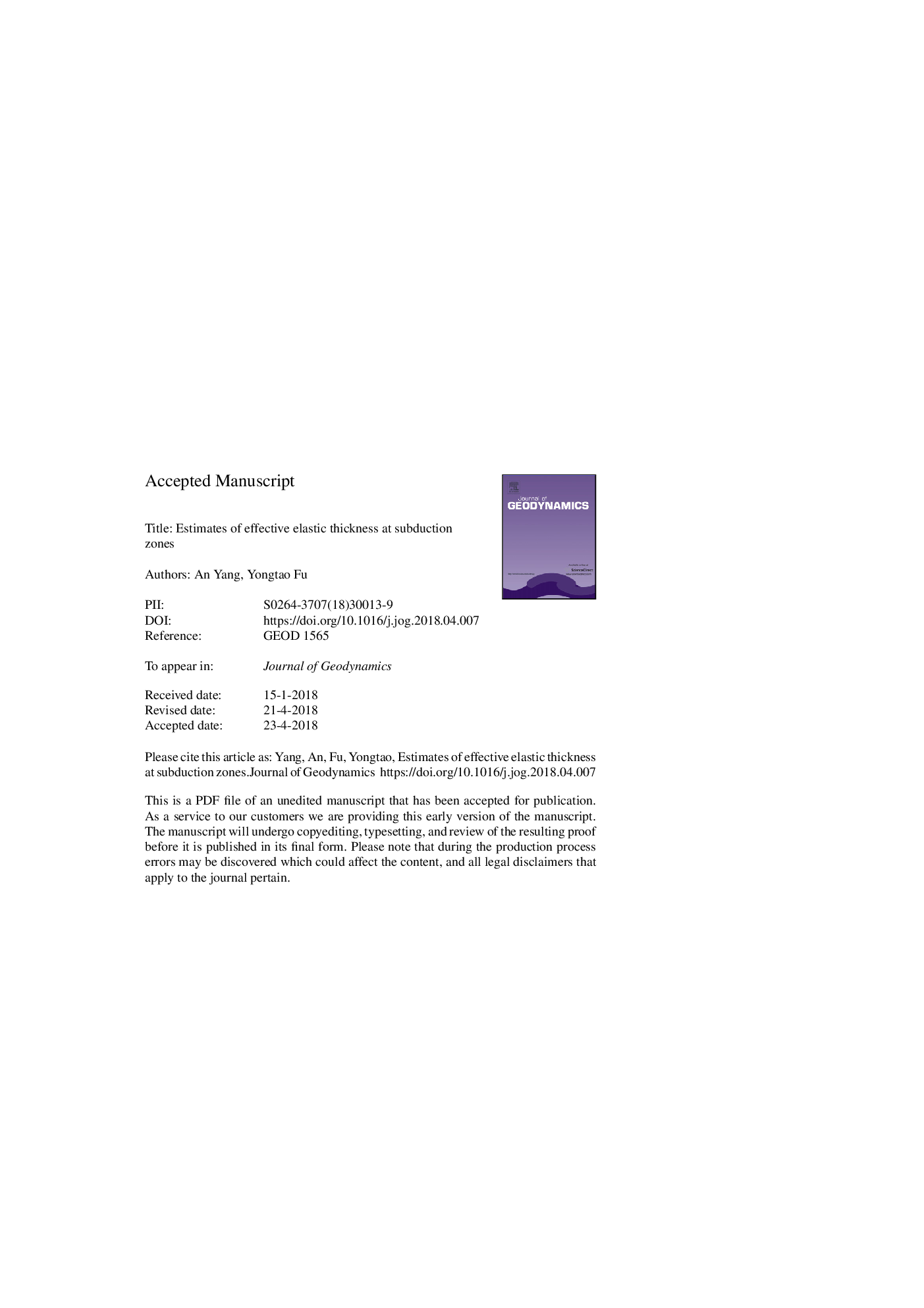| Article ID | Journal | Published Year | Pages | File Type |
|---|---|---|---|---|
| 8908410 | Journal of Geodynamics | 2018 | 29 Pages |
Abstract
The effective elastic thickness (Te) is an important parameter that characterizes the long-term strength of the lithosphere. Estimates of Te at subduction zones have important tectonic and geodynamic implications, providing constraints for the strength of the oceanic lithosphere at a short-term scale. We estimated Te values in several subduction zones worldwide by using models including both surface and subsurface loads from the analysis of free-air gravity anomaly and bathymetric data, together with a moving window admittance technique (MWAT). Tests with synthetic gravity and bathymetry data show that this method is a reliable way to recover Te of oceanic lithosphere. Our results show that there is a noticeable reduction in the effective elastic thickness of the subducting plate from the outer rise to the trench axis for most studied subduction zones, suggesting plate weakening at the trench-outer rise of the subduction zones. These subduction zones have Te range of 6-60â¯km, corresponding to a wide range of isotherms from 200 to 800â¯Â°C. Different trenches show distinct patterns. The Caribbean, Kuril-Japan, Mariana and Tonga subduction zones show predominantly high Te. By contrast, the Middle America and Java subduction zones have a much lower Te. The Peru-Chile, Aleutian and Philippine subduction zones show considerable scatter. The large variation of the isotherm for different trenches does not show clear relationship with plate weakening at the outer rise.
Related Topics
Physical Sciences and Engineering
Earth and Planetary Sciences
Earth-Surface Processes
Authors
An Yang, Yongtao Fu,
